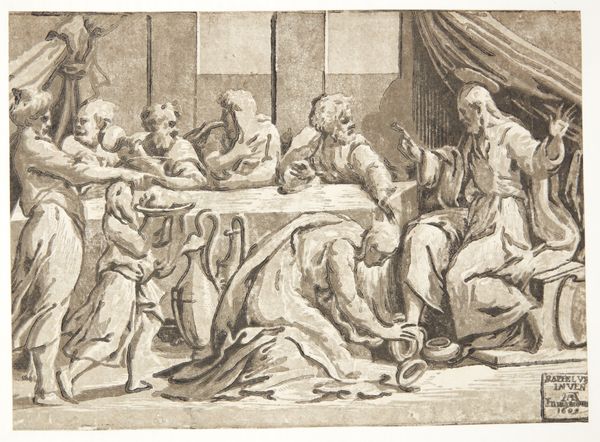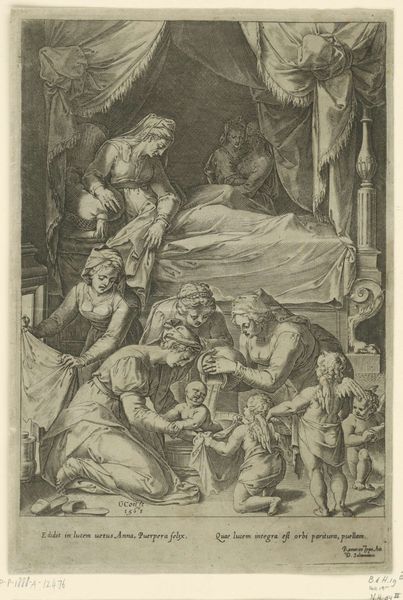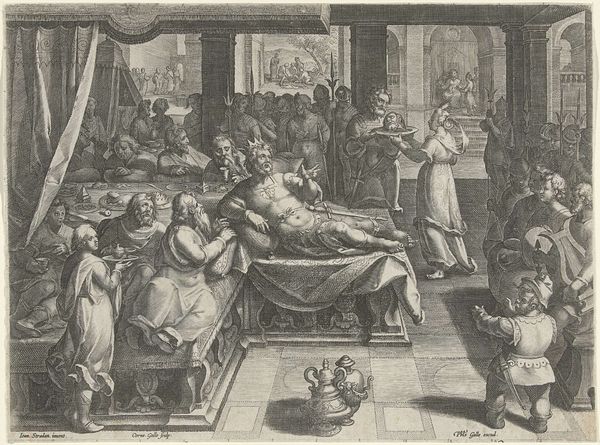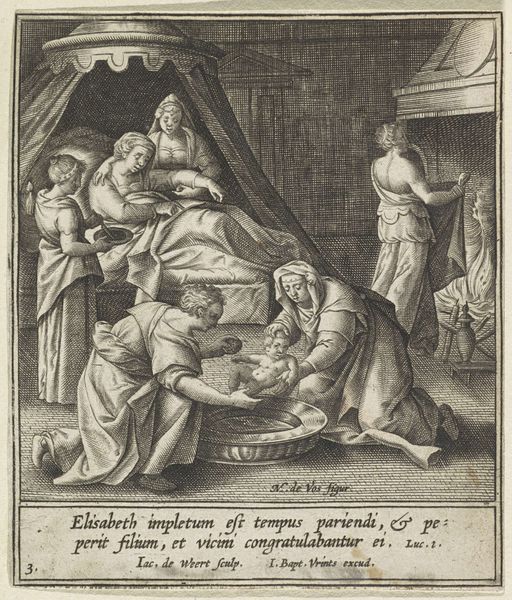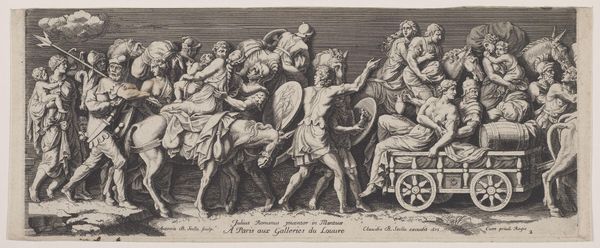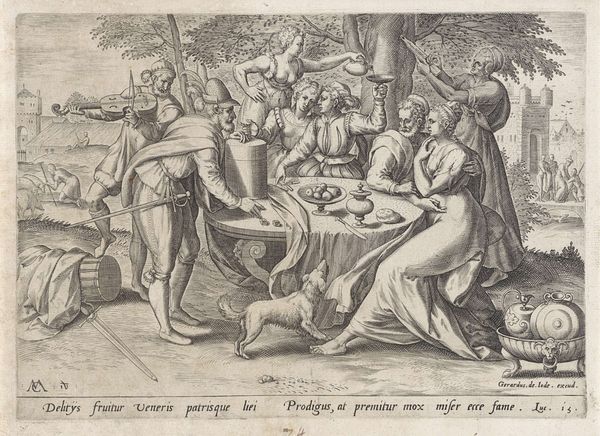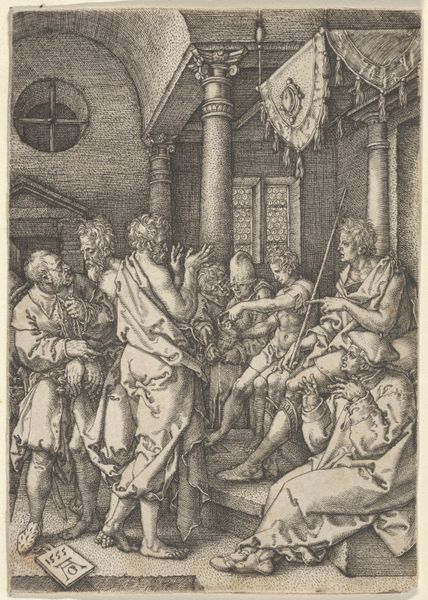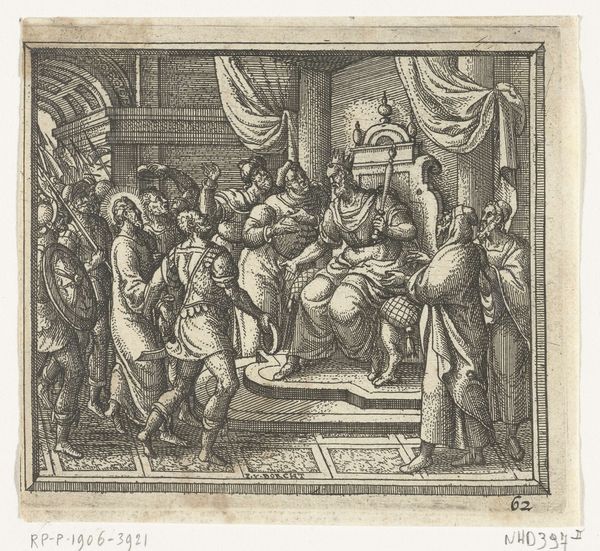
print, engraving
#
narrative-art
# print
#
geometric
#
group-portraits
#
genre-painting
#
history-painting
#
italian-renaissance
#
engraving
Dimensions: height 78 mm, width 129 mm
Copyright: Rijks Museum: Open Domain
Curator: Oh, it's so intricate, like a glimpse into a hidden world. There's a peculiar calmness to this piece, isn't there? Editor: Absolutely. What we have here is "Feast of Dido and Aeneas with Cupid as Ascanius," an engraving by an anonymous artist, likely from somewhere between 1515 and 1566. It is part of the Rijksmuseum collection. You can tell right away it belongs to the Italian Renaissance. But more than that, it seems charged with performative identity and subtle political maneuvering, even for a scene seemingly just showing the "good life." Curator: You put it perfectly—there’s an inherent theatricality. And political? In the leisurely depiction of a feast? It feels more... I don’t know, dreamlike, as if observing a distant memory through a gauze. The faces seem to echo classical ideals, yet their gaze remains detached, absorbed, focused inward. Editor: The feast is staged. We know from the tale of Dido and Aeneas that this feast is the backdrop to Cupid's deception, masquerading as Ascanius to enflame Dido’s love for Aeneas. Gender and power intersect here. She welcomes Aeneas as an act of hospitality and love—but it has preordained catastrophic implications. Look at who's being served, who is serving, who is placed strategically. It mirrors real-world power dynamics of the time. It all boils down to colonial endeavors through any means necessary. Curator: That casts the scene in such a different light. The lyre, the draped fabric, the rather animalistic table legs— they felt whimsical. I guess in the right light, anything is propaganda. I love when art flips your script so completely. Now I notice an atmosphere, which wasn't present to me when first viewed, as much as I may hate to admit. Editor: And that's the beauty of layering context. Recognizing not only the artist's hand but the historical hand that shaped the artist’s choices, whether consciously or not, illuminates not just the artwork, but the ongoing struggles it implicitly captures. And that awareness, however uncomfortable, makes us more conscious observers of the present. Curator: Agreed. What appeared at first as serene now churns with underlying tension and agenda, with subtle yet decisive historical cues! I think it calls to my own creative impulses; in other words, art and interpretation offer not concrete definition, rather dynamic reflection and self actualization. Editor: Precisely, reflecting on the complex historical forces that shaped art and culture allows us to approach a brighter, more equitable future.
Comments
No comments
Be the first to comment and join the conversation on the ultimate creative platform.
